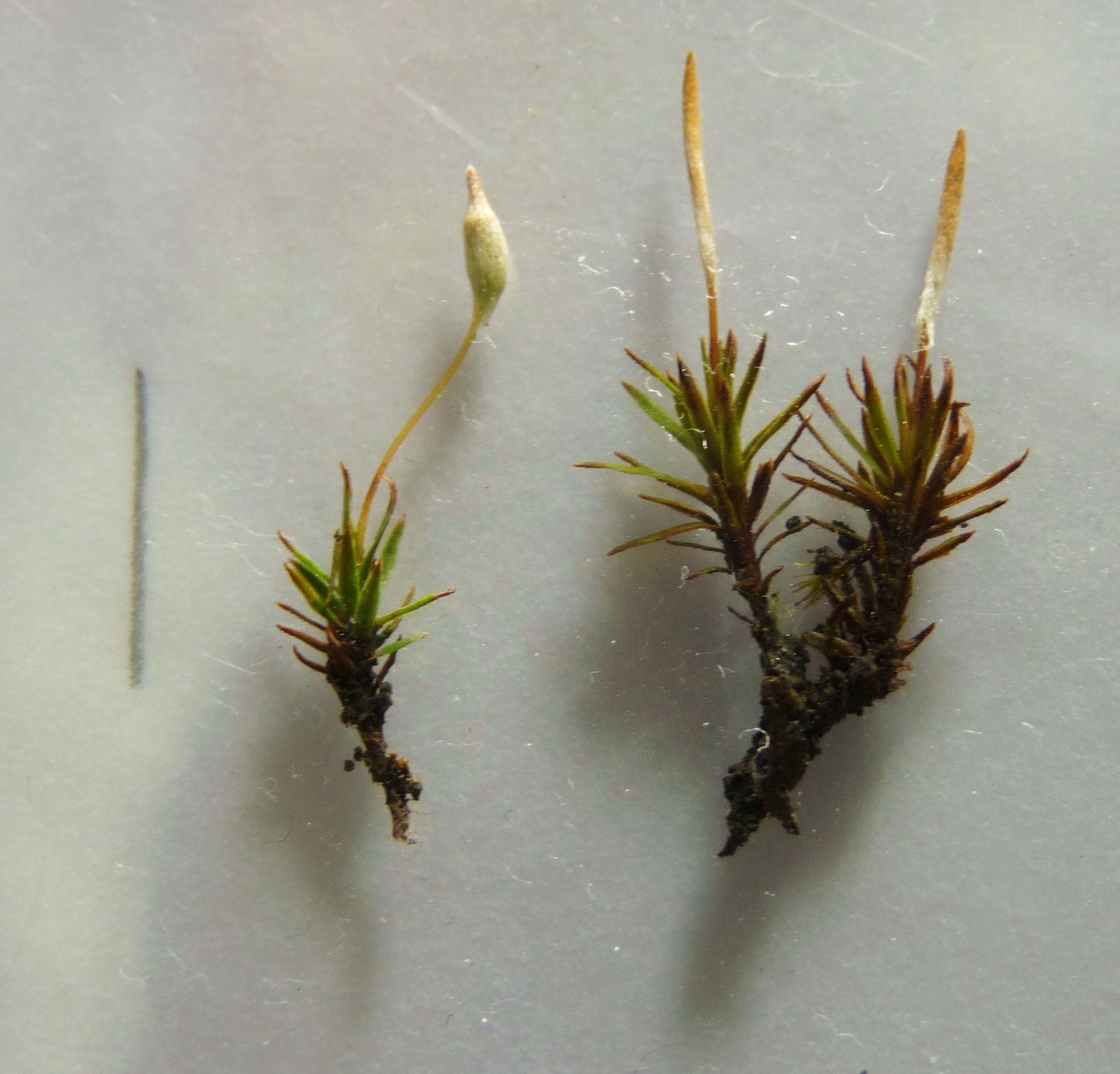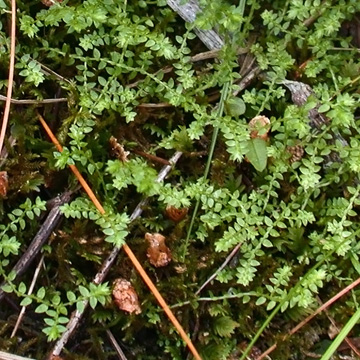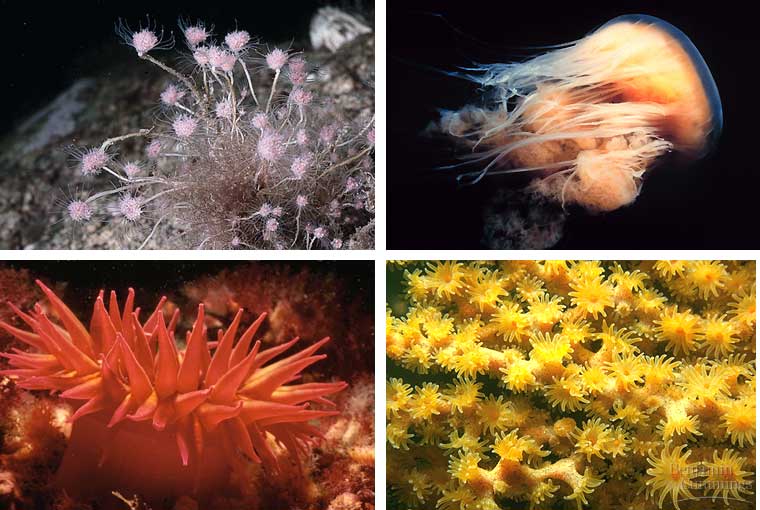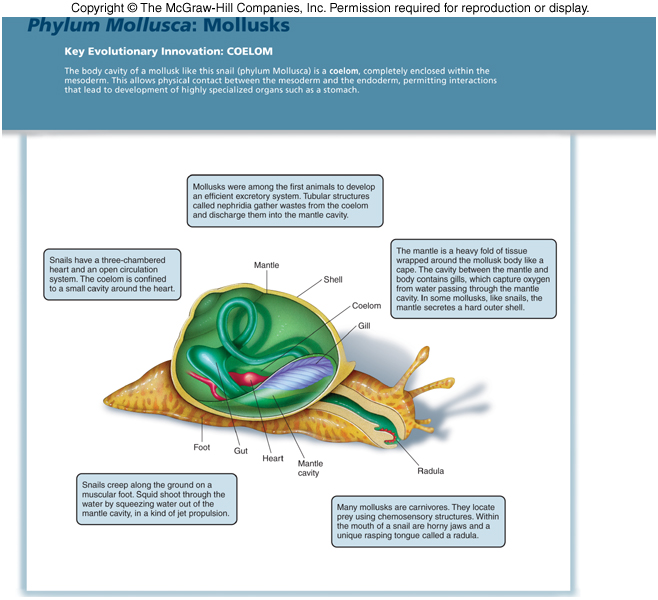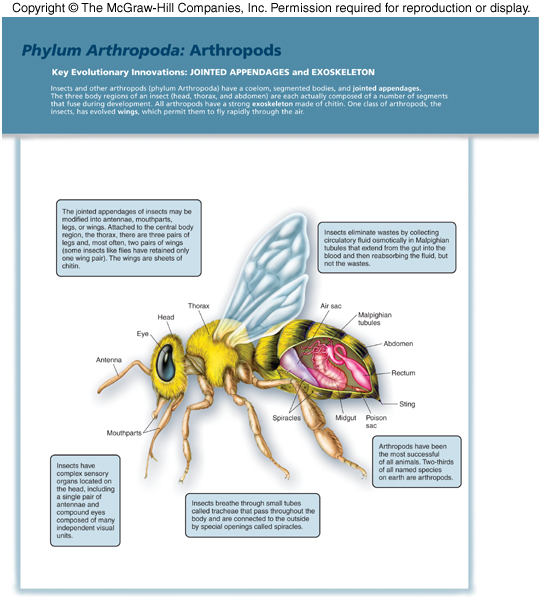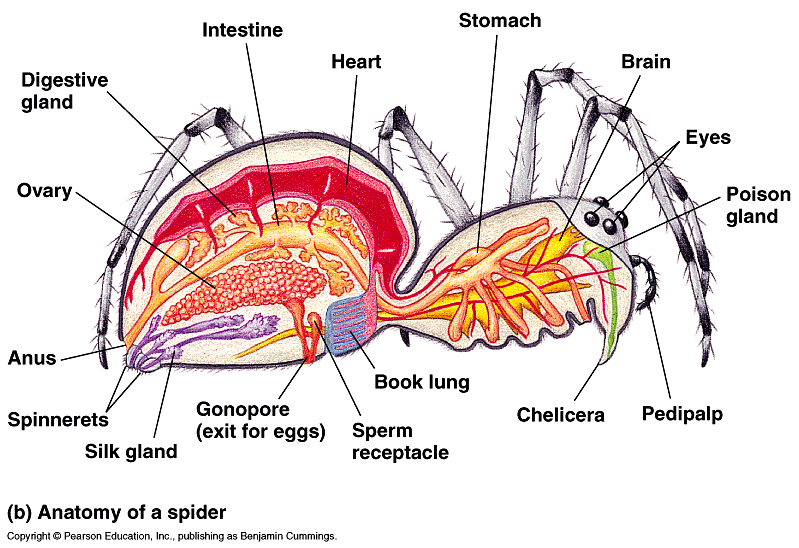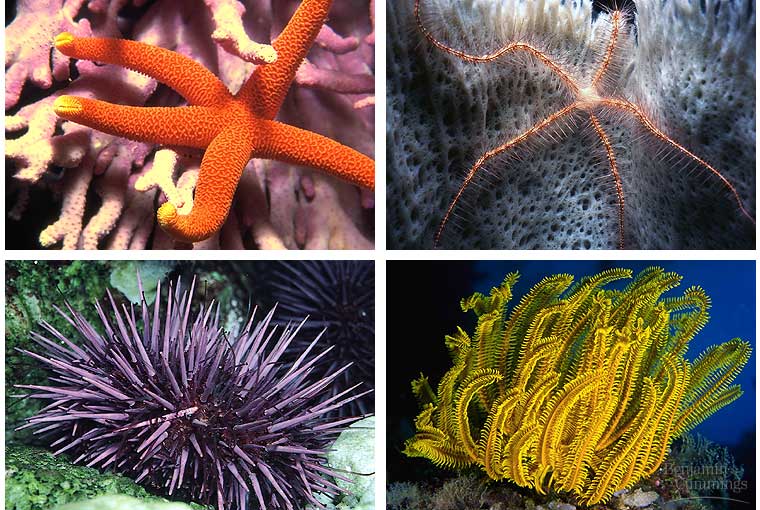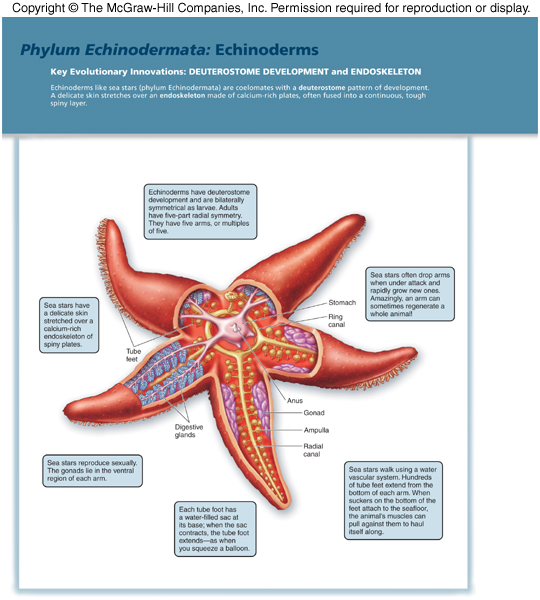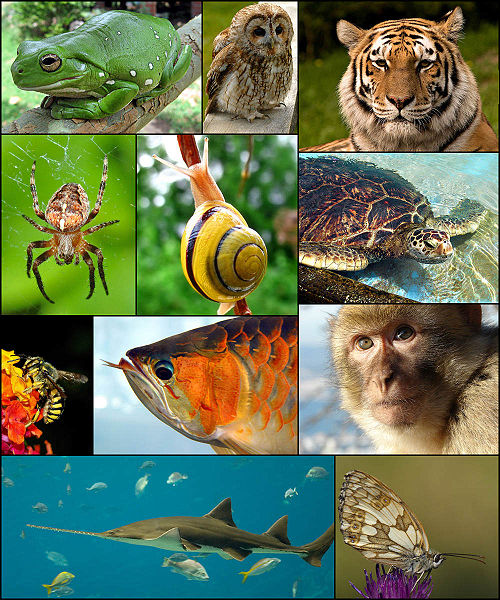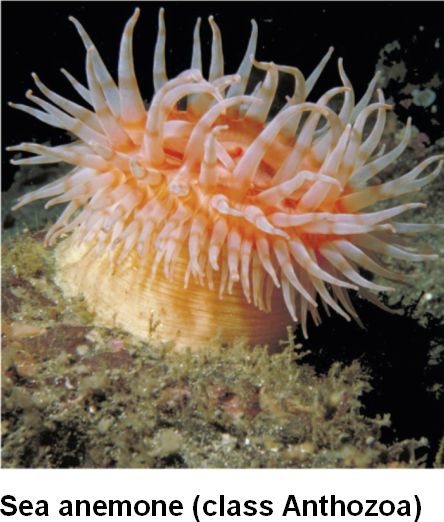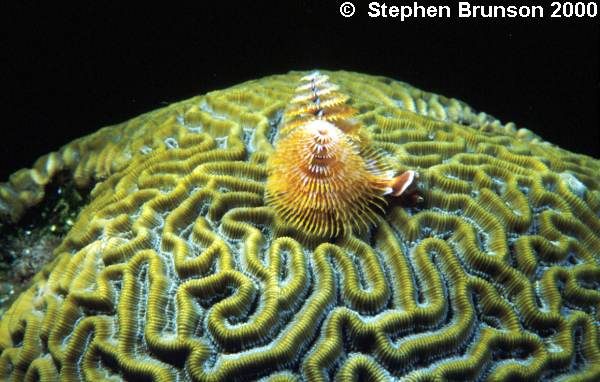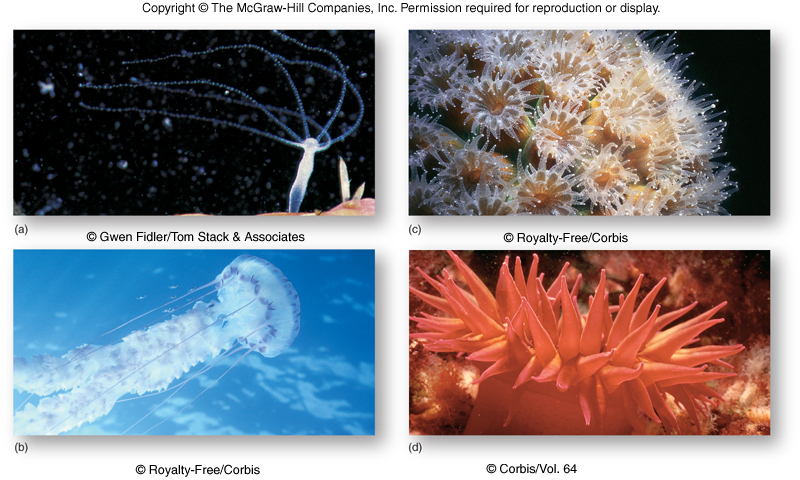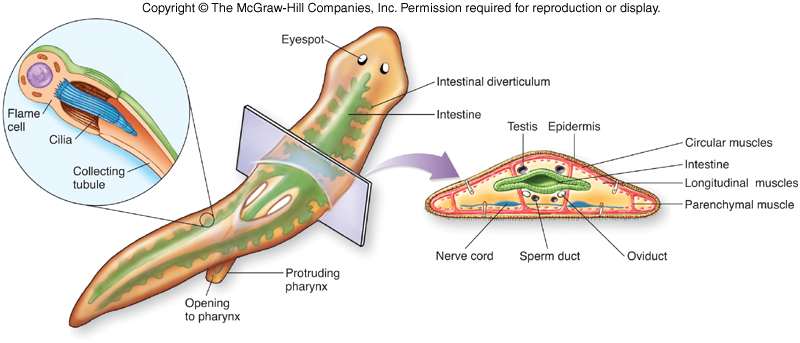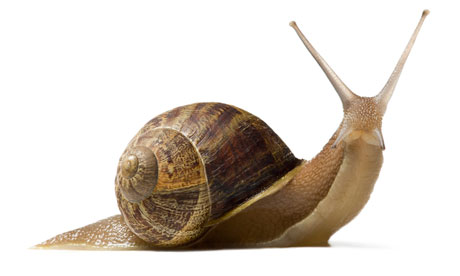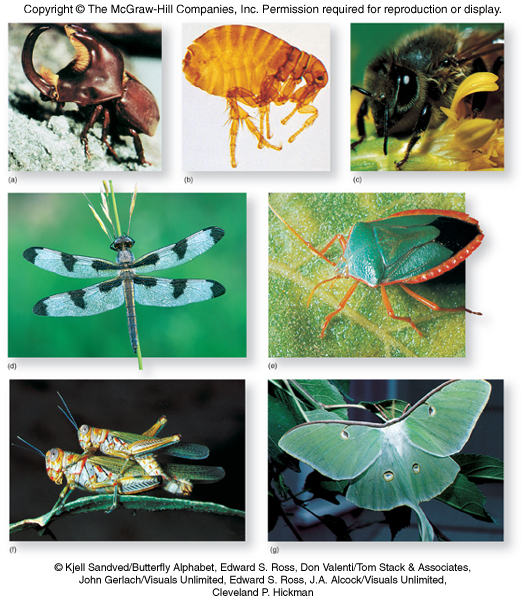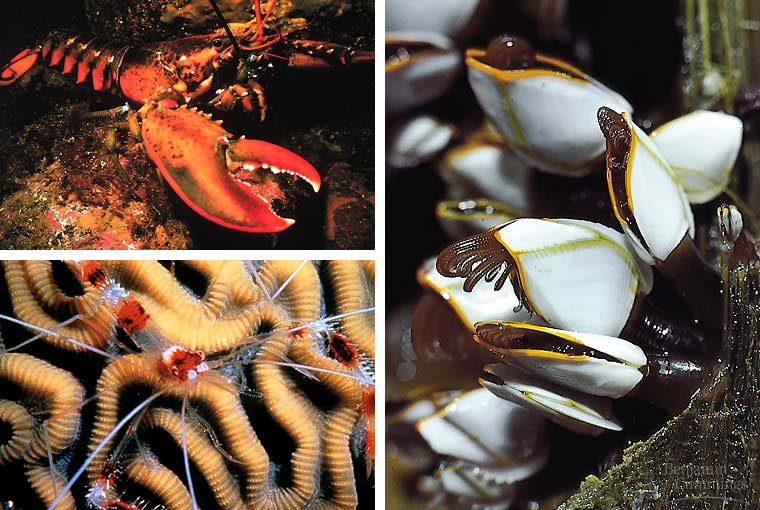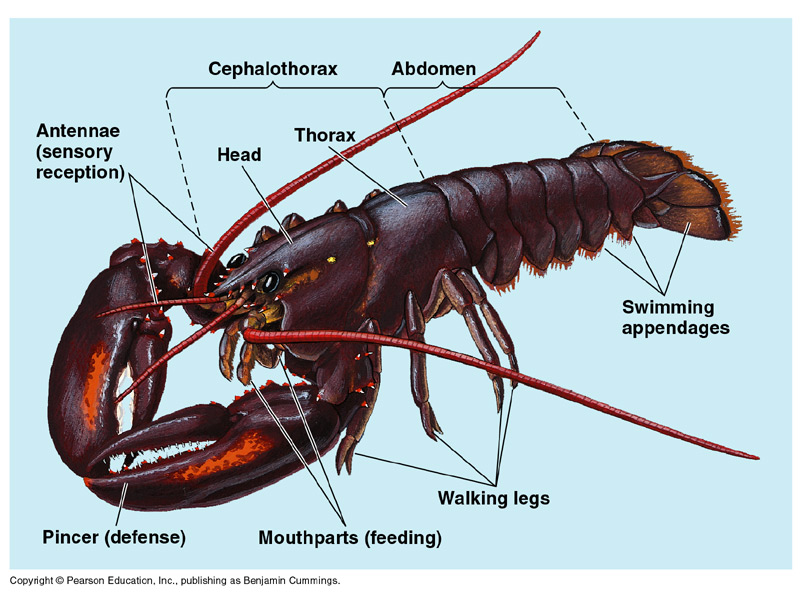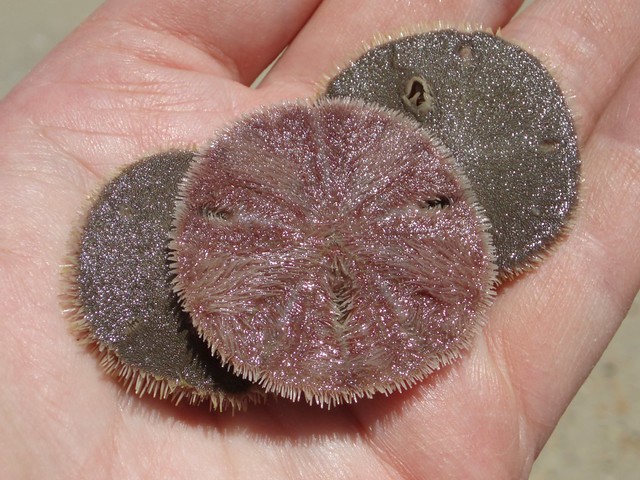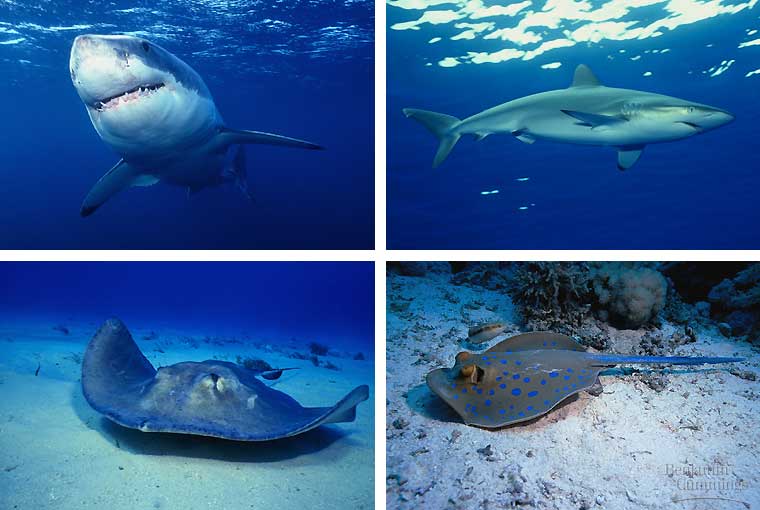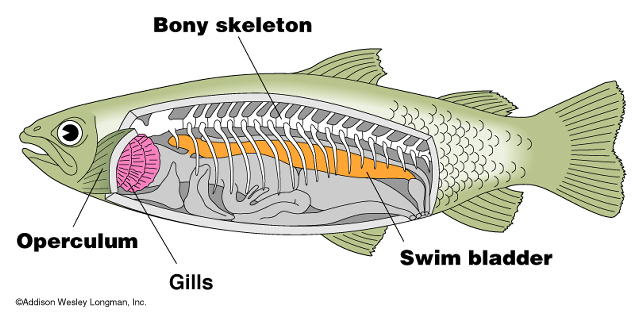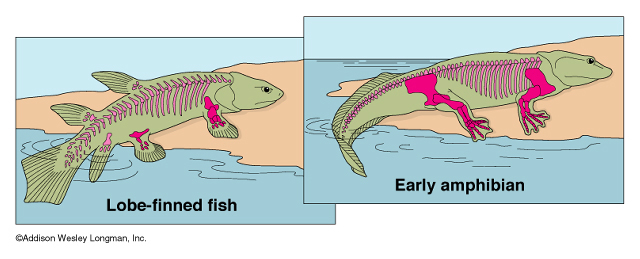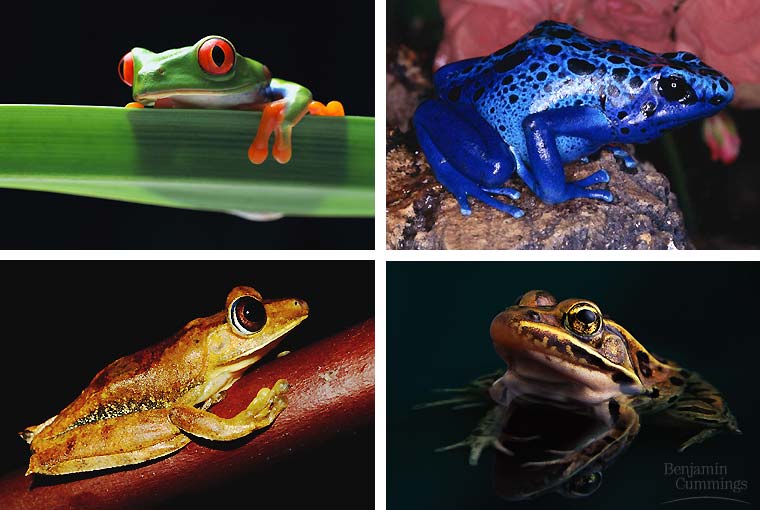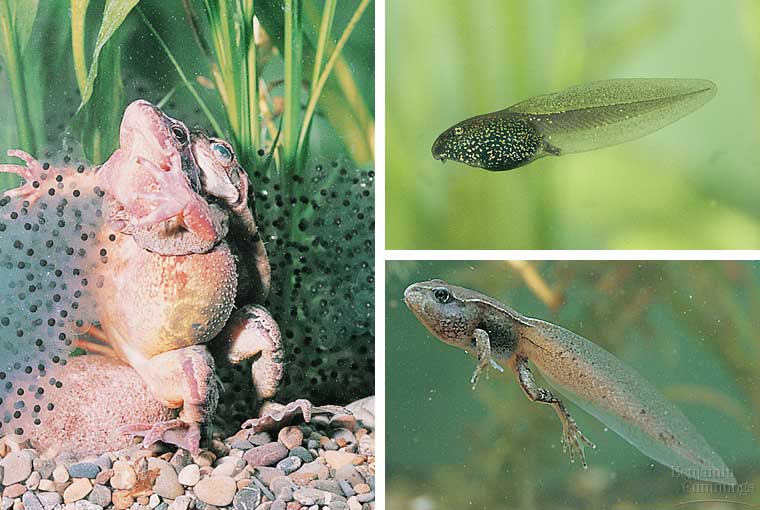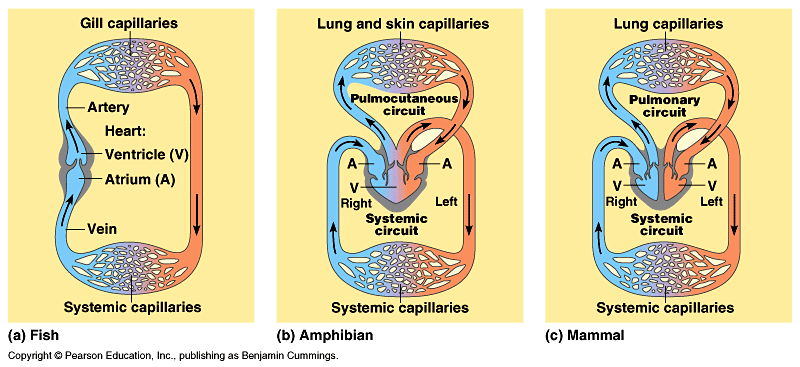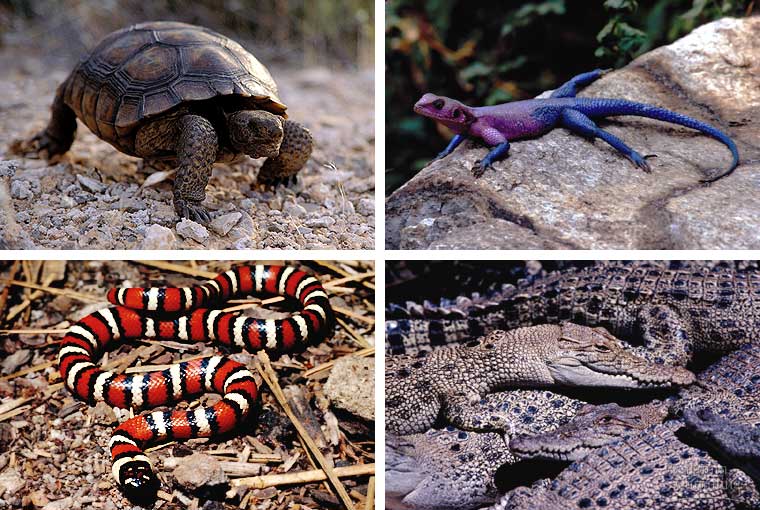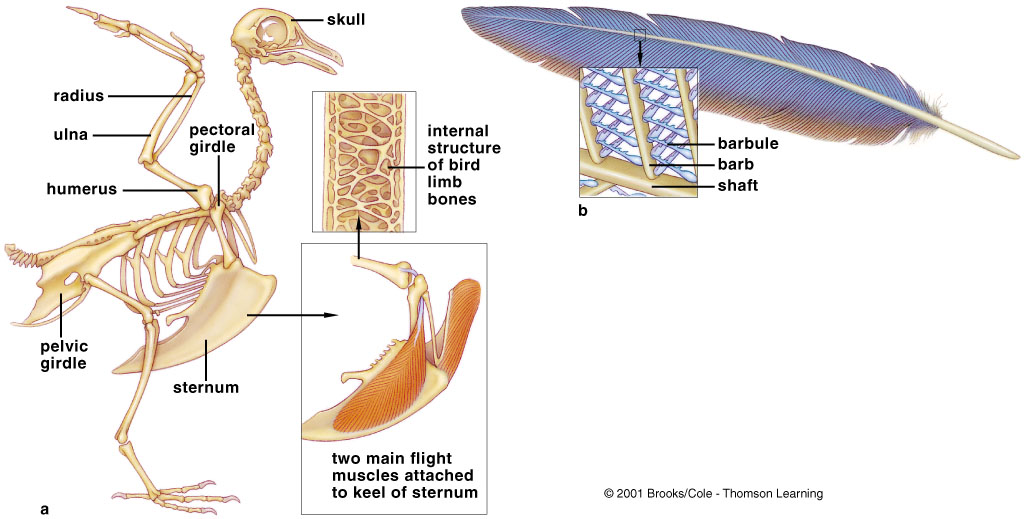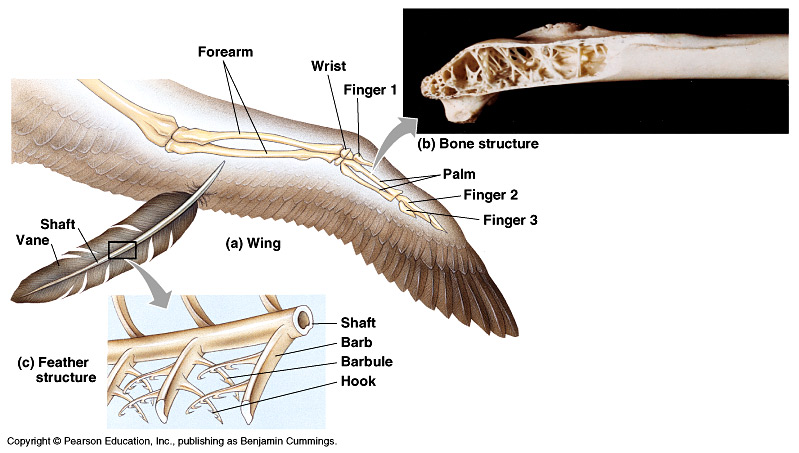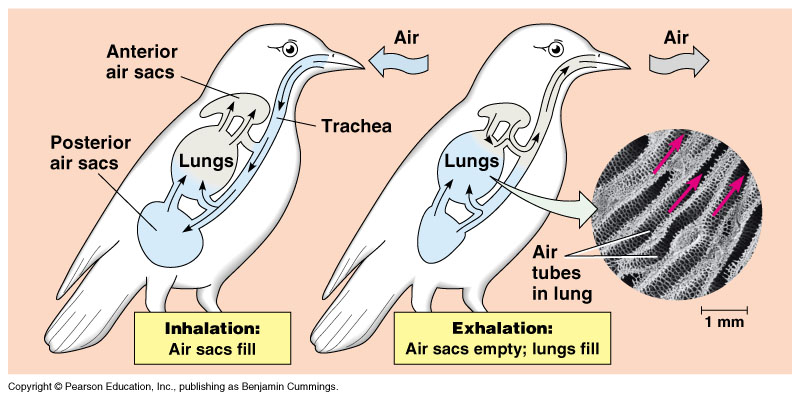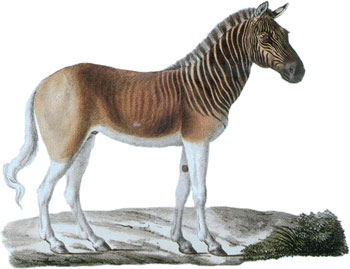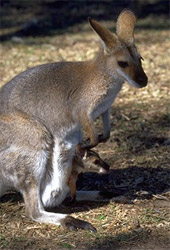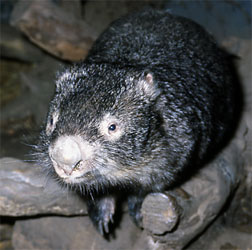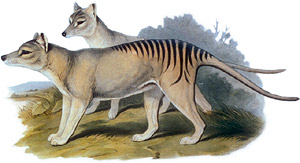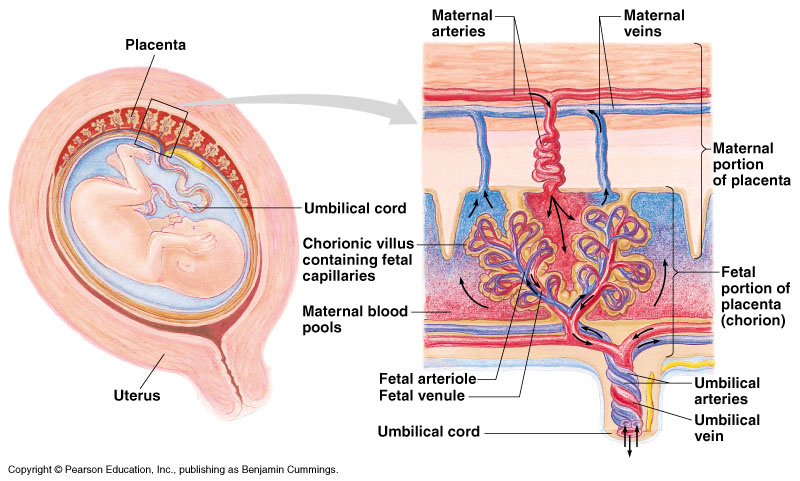From the dawn of human civilization people must have began to identify plants and animals and named them, because their survival was dependent on the use of plants and animals .
Species were identified separately by their specific characters.
Major groups of plants and animals like grasses , fish , snakes , birds were also identified separately.
The names used were however varies depending on the language of the people and the place . Biological study of organisms need a unified system of classification and nomenclature .
Aristotle was the first person who classified organisms systematically .
Binomial nomenclature
With the advance of science and knowledge of biology different scientists, botanists and zoologists used different methods of naming and classification of organisms.Most often polynomial system was used until eighteenth century .
Carolous Linneus (1707-1778) proposed a binomial system of nomenclature of species which was accepted world wide.According to this name of an organism has two parts .
First is the generic name and the second is specific epithet.
Generic name is usually a noun and specific epithet an adjective describing a particular feature.
Related species have the same generic name with different specific epithets.
Dipterocarpus means fruit with two wings ,
zelanicus means endemic to Sri Lanka.
International codes of binomial nomenclature
Biologists have adopted sets of rules or codes of nomenclature.These codes are slightly different for plants ,animals ,bacteria and viruses.Some of the important rules for naming plants ,fungi and animals are as follows.- The species of organisms cannot have the same name.
- Each species has a generic name and a specific name, both together forming the species name or scientific name.
- Name should be made up of latinized words written in the Roman nscript.
- It should be underlined when hand written and italicized when printed.
- The first letter of the generic name must be capitalized and specific epithet must be in simple letters.
- A third word can be used to represent a subspecies or a variety.eg:Panthera pardus kotiya -Sri Lankan leopard
- In scientific work namr of the author who gave the name is indicated by a capital letter, an abbreviation or full word at the end of the name , which is not latinised.eg; Cocus nucifera L (L for Linnaeus}
Methods of natural and artificial classification
Arrangement of organisms into groups on the basis of the common characteristics is called classification.Taxonomy is the science of classification.This includes placing groups of organisms in a hierarchichal order.
Two methods of classification
Artificial classification
Grouping is based on a few pre selected unifying characters .
The characters are selected first according to convenience and organisms are grouped based on the selected criteria.
Natural relationships are ignored
Only system used before eiteenth centuary.
Easy to used , easy to expand by adding more groups.
Natural Classification
Grouping is based on evolutionary relationships
Represents true natural relationships, based on phylogeny
Systems developed after study of evolution.
Based on many characters.
Characters used can be morphological ,anatomical, cytological or molecullar.
Most resently DNA and RNA sequences are being used .
Eg.Plants can be classified into Bryophyta, Lycophyta, pteridophyta,Coniferophyta, Anthophyta
Arthropods can be classified into Crustacea, Insecta, Chilopoda; Arachnida
Dichotomous key
A written dichotomous key presents the reader with two statements that describe certain characteristics.
The statements should be mutually exclusive for the key to work efficiently. For example, 'it is either or it isn't'.
On selecting one, the reader is presented with the next couplet choice in the key and so on - to eventually arrive at an identification. .
2.Having tranaparent wings...................3 Do not have tranaparent wings .........Beetle
3.Possess hairs on appendages................Honey Bee
Do not possess hairs on appendages.....Butterfly
2.Possess legs ................... 3 Donot possess legs................. 4
3.Havings wings...............Butterfly
Do not have wings...............Frog
4.Body covered by scales...............Snake
Body not covered by scales............Earth worm
Systems of classification
Domain- Bacteria
Archaea
Eukarya
Kingdom - Protista
Fungi
Plantae
Animalia
Domain - Bacteria
Cellular organization prokaryotic
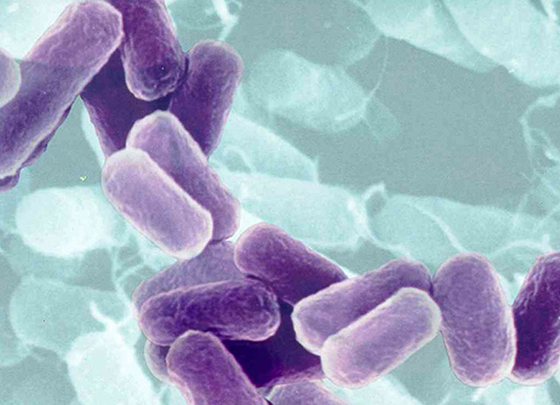

Protein coats of the viruses give them a characteristic symmetry.
Onthis basis two morphological types are recognized
They are Icosa hedral and
Helical
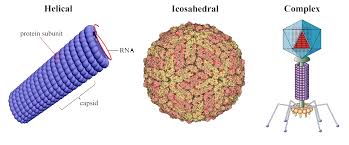
Some viruses have pollyphospholipid coats
eg: Retro virus
Viruse' s posses an enzyme called reverse transcriptase which transcribes their RNA to DNA eg; HIV
Many viruses cntain within the capsid one or more enzymes that are released into the host cell after the virus is uncoated
The most common enzymes are polymerases and they help in the replication of nucleic acids of viruses
A wide variety of of lipid components have also been found in viruses
eg: phospholipids , glycolipids and fatty acids
Some viral envelopes contain with spikes made up of glycoprotein
Reproduction of virus
The life cycle of bacterio phage
The life cycle of plant viruses or animal viruses are similar
Plant viruses enter plant cells through surface wounds or insects feeding on plant sap
Characteristic features of bacteria
Ribosomal proteins and RNA polymerase are different from those of eukaryotes
Main characteristic features of kingdom protista
Eukaryotic
Unicellular or multi cellular or colonial form
Photoautotrophic or heterotrophic
If cell wall is present it is made up of cellulose
Flagella, cilia or pseudopodia may be present
Phyla of kingdom protista
Ciliophora
Rhizopoda
Chrysophyta
Phaephyta
Rhodophyta
Chlorophyta
Characteristic features of phyla of kingdom protista
Two methods of classification
Artificial classification

Grouping is based on a few pre selected unifying characters .
The characters are selected first according to convenience and organisms are grouped based on the selected criteria.
Natural relationships are ignored
Only system used before eiteenth centuary.
Easy to used , easy to expand by adding more groups.
Natural Classification

Grouping is based on evolutionary relationships
Represents true natural relationships, based on phylogeny
Systems developed after study of evolution.
Based on many characters.
Characters used can be morphological ,anatomical, cytological or molecullar.
Most resently DNA and RNA sequences are being used .
Eg.Plants can be classified into Bryophyta, Lycophyta, pteridophyta,Coniferophyta, Anthophyta
Arthropods can be classified into Crustacea, Insecta, Chilopoda; Arachnida
Dichotomous key
A written dichotomous key presents the reader with two statements that describe certain characteristics.
The statements should be mutually exclusive for the key to work efficiently. For example, 'it is either or it isn't'.
On selecting one, the reader is presented with the next couplet choice in the key and so on - to eventually arrive at an identification. .
How the key works[edit]
- Go to start
- Use choices given to arrive at the lowest possible level
- Organism is identified as much as possible
Example 1 : Beetle, Honey Bee, Butterfly, Ant
1.Possess wings .....................................2 Do not possess wings .........................Ant
2.Having tranaparent wings...................3 Do not have tranaparent wings .........Beetle
3.Possess hairs on appendages................Honey Bee
Do not possess hairs on appendages.....Butterfly
Example2: Snake , Sea Anemone ,Butterfly, Earth worm ,Frog
1.Radially symetrical body ........... Sea Anemone Not having symetrical body..........2
2.Possess legs ................... 3 Donot possess legs................. 4
3.Havings wings...............Butterfly
Do not have wings...............Frog
4.Body covered by scales...............Snake
Body not covered by scales............Earth worm
Systems of classification
The early classification systems were all artificial systems.
Mostly based on human uses.
Aristotle was the first to classify organisms scientifically.
He divided organisms into
plants
animals
Animals were further classified according to criteria such as
mode of locomotion
reproduction
presence or absence of red blood cells.
Aristotle' s pupil Theophrastus
classified plants according to habit
eg: Trees, Shurbs, Herbs and
Upto the time of Linnaeus , scientists used many different methods.
Carolus Linnaeus (1753), Swedish botanist ,
introduced binomial nomenclature and
classified 6000 plants into a hierarchical order of taxa
eg; species
genus
order
class
Classification of flowering plants was based on the
number of stamens and
styles of flowers
He identified two kingdoms of organisms
plants
animals
With the discovery of micro organisms ,
the scientists understood that there were organisms which could not be assigned into either plants or animals.
To get over this difficulty ,
Ernest Haeckel (1866) introduced a third kingdom
Protista
He also introduce the taxon phylum and
classified many organisms
With the discovery of electron microscope,
Biologists identified two cellular organization,
Prokaryotic
Eukaryotic
Five kingdom system of biological classification was introduced by
Robert H.Whittaker-
Monera
Protista
Fungi
Plantae
Animalia
His classification was based on the three criteria
1.cellular organization
2.unicellular or multi cellular nature
3.mode of nutrition
With the acceptance of Darwin's theory on evolution and
unitary origin of life,
Taxonomists began to use of molecular methods in studying evolutionary relationships it became apparent that in the very early evolution, organisms had seperate into three stocks which are now called Domains
Carl Woese (1977)
classified organisms into three domains at a higher level over the kinhdoms
Archaea
Bacteria
Eukarya
Hierarchy of taxa from domain to species
In taxonomy each level of taxonomical hierarchy is called a taxon and each taxon has a rank and a name.
eg: rank name.
class- reptilia
Under the hierarchical system there are levels of taxa.
Each domain divided into kingdoms
Kingdom is divided into phyla
Phylum is divided into classes
Many of these categories may also be sbdivided
eg: sub family. sub species
From domain to species , the number of shared characters among the members in the taxa increases
From species to domain , the number of individuals in the taxon increases
Present system of classification and its basis
With the rapid advance of molecular biology new information on the evolutionary relationships of organisms are being collected rapidly.
- The sequance of bases of DNA of important genes
DNA of mitochondria
The base sequance of ribosomal RNA
The sequance of amino acids in common proteins
Molecular structure of cellular components
are used as important taxonomoic criteria in modern systematics.
As a result classification systems are changing rapidly.
The three Domain classification suggested by Woese is adapted here for the convenience.
It is very clear however Kingdom protista is not a natural group.
It is an artificial group including organisms which have different evolutionary origins
Viruses do not have cellular organization , therefore does not belong to any of the kingdoms.
It is also an artificial group considered seperately
Domain- Bacteria
Archaea
Eukarya
Kingdom - Protista
Fungi
Plantae
Animalia
Domain - Bacteria
Cellular organization prokaryotic
Cell wall component peptidoglycan
Lipids in cell membrane are not branched
Sensitive to antibiotics
Protein synthesis begins with formyl methionine
One kind of RNA polymerase enzyme
Lives in many habitats
eg:


Cyanobacteria Purple bacteria Green Sulphur Bacteria
Domain-Archaea
Cellular organization prokaryotic
Cell wall component lacks peptidoglycan, contains proteins and polysaccharides
Lipids in cell membrane have branched and chained structure
Not sensitive to antibiotics kike streptomycin and chloromphenicol
Protein synthesis begins with methinine
Several kinds of RNA ploymerase enzymes
Lives in extreme environmental conditions such as volcanic pits , hot springs,salt marshes,deep sea
Methanococcus
Domian - Eukarya
Cellular organization eukaryotic
Cell wall component lacks peptidoglycan, contains polysaccharides
Lipids in cell membrane are not branched
Not sensitive to antibiotics
Protein synthesis begins with methionine
Several kinds of RNA polymerase enzymes
Lives in many different environmental conditions
eg; protists, fungi,plants , animals
Viruses
Viruses are neither prokaryotes nor eukaryotes and donot show any cellular organization
They range in size from 20nm - 300nm and they can be observed only by the use of electron microscope
Viruses are composed of a central core of nucleic acid and surrounded by aprotein coat called the capsid, which is made up of a fixed number of protein molecules called capsomeres
The nucleic acid may be DNA or RNA depending on the type of virus
Most viruses that infect plants have RNA
Very few also have DNA.
Animal viruses include DNA - Herpes simplex or RNA - influensa
rabies virus
retro virus - HIV
Bacterial virus either include DNA or RNA
Protein coats of the viruses give them a characteristic symmetry.
Onthis basis two morphological types are recognized
They are Icosa hedral and
Helical
Some viruses have pollyphospholipid coats
eg: Retro virus
Viruse' s posses an enzyme called reverse transcriptase which transcribes their RNA to DNA eg; HIV
Many viruses cntain within the capsid one or more enzymes that are released into the host cell after the virus is uncoated
The most common enzymes are polymerases and they help in the replication of nucleic acids of viruses
A wide variety of of lipid components have also been found in viruses
eg: phospholipids , glycolipids and fatty acids
Some viral envelopes contain with spikes made up of glycoprotein
Nature of viruses
Viruses are obligate parasites
They can live and reproduce only wth in a metabolizing host cell using protein synthesizing and energy generating system of the cell
Viruses are widely distributed in nature and also they can infect other micro organisms
Since viruses are obligate parasites , cultivation of viruses requires living cells eg; chick embryo
eg: bacterio phage
The life cycle of bacterio phage
The life cycle of plant viruses or animal viruses are similar
Plant viruses enter plant cells through surface wounds or insects feeding on plant sap
Characteristic features of bacteria
Prokaryotic organisms
Photoautotrophic, Chemoautotrophic or heterotrophic
Motile or non motile
Uni cellular or colony forming
Cell division is by transverse binary fission
Plasma membranes are made of different kinds of lipids
The cell walls are composed of peptidoglycan (carbohydrate + protein complex)
Ribosomal proteins and RNA polymerase are different from those of eukaryotes
eg Coccus, Bacillus
Characteristic features of Cyanobacteria
Prokaryotic organisms
Photosynthetic
Most are unicellular. But some are linked to form filaments ,sheathed in mucous
Photosynthetic pigments are chlorophyll a, phycocyanin, Blue green in colour
Some have the ability of fixing nitrogen
eg: Lyngbia
Main characteristic features of kingdom protista
Eukaryotic
Unicellular or multi cellular or colonial form
Photoautotrophic or heterotrophic
If cell wall is present it is made up of cellulose
Flagella, cilia or pseudopodia may be present
Phyla of kingdom protista
Ciliophora
Rhizopoda
Chrysophyta
Phaephyta
Rhodophyta
Chlorophyta
Characteristic features of phyla of kingdom protista
Ciliophora
Unicellular
Heterotrophic
Cilia as the locomotory organ
No cell wall
Paramecium
Rhizopoda
Heterotrophic
Pseudopodia for the locomotion
No cell wall
Amoeba
Chrysophyta
Uni cellular
Photoautotrophic.Ch a, Carotine, Fucoxanthin are the photosynthetic pigments
Cell wall is made up of cellulose, pectin, mainly silica
Storage is chrysolaminarin Diotoms
Phaeophyta
Multi cellular
Photoautotrophic.Ch. a,c, carotine, Fucoxanthin as photosynthetic pigments
Ceii wall is made up of cellulose. alginic acid
Storage food is lamnarin and manitol
Sargasum
Sargasum
Rhodophyta
Multi cellular
Photoautotrophic.Ch.a,d,Phycocyanin, Phycoerithrin as photosynthetic pigments
Cell wall is made up of cellulose and agar
Storage is floridian starch Gelidium
Chlorophyta
Uni or multi cellular
Photoautotrophic
Vegetative cells and reproductive cells posses flagella
Cell wall is made up of cellulose and pectin
Storage food is starch
Chlamidomonas
Kingdom - Fungi
Eukaryotic
Unicellular or not
Truly multi cellular which form pypae
Saprophtic or parasitic or symbiotic
Cell wall is made up of chitin
Storage food is gycogen
A few are flagellated
Phyla of kingdom fungi
Chytridiomycota
Zygomycota
Ascomycota
Basidiomycota
Branched, monokaryotic or dikaryotic and septate mycelium
Eukaryotic
Unicellular or not
Truly multi cellular which form pypae
Saprophtic or parasitic or symbiotic
Cell wall is made up of chitin
Storage food is gycogen
A few are flagellated
Phyla of kingdom fungi
Chytridiomycota
Zygomycota
Ascomycota
Basidiomycota
Characteristic features of phyla of kingdom fungi
Chytridiomycota
Aquatic
Flagellated fungi, dichotomously branched hypae
Asexual reptoduction by zoospores
Sexual reproduction by motile male and female gametes
eg: Allomyces
Sexual reproduction by motile male and female gametes
eg: Allomyces
Branched, multinucleated and aseptate mycelium
Asexual reproduction by spores within sporangium
Zygosporangium is produced in sexual reproduction
eg:Mucor
Asexual reproduction by conidia , cut off by conidispores
Sexual reproduction by ascospores
Basidiomycota
Branched, monokaryotic or dikaryotic and septate mycelium
No. of sexual reproduction
Sexual reproduction by basidiospores
eg:Agaricus
Characteristic features of kingdom plantae
Eukaryotic
Multicellular
Photoautotrophic
Cell wall is mainly composed of cellulose
Main storage food is staech
Locomotory organ s absent but cilia or flagella may be found in gamates
Phyla of kingdom plantae
Bryophyta
Lycophyta
pterophyta
Cycadophyta
Coniferophyta
Anthophyta
Main characteristics of the phyla of kingdom plantae
Bryophyta
Especially common in moist places
No vascular tissue
Gametophytes are dominant and photosynthetic
Homosporous
External water is necessary forfertilization
Seed plants
eg; Marchantia
Mosses- Pogonatum
Lycophyta
Common in moist places
Sporophytesare dominant and gametophytes partially depend on sporophytes
Homosporous or heterosporous
External water is necessary for fertilization
Seed less plants
eg:Sellaginella
pterophyta
Terrestrial life adaptations are found
Vascular tissues are present
Sporophytes are dominant and photpsynthetic
Gametophytes depend on sporophytes
Heterosporous
External water is not necessary for fertilization
Seed bearing plants
Naked seed plants
eg; Nephrolepis
Cycadophyta
Terrestrial life adaptations are found
Vascular tissues are present
Sporophytes are dominant and photpsynthetic
Gametophytes depend on sporophytes
Heterosporous
External water is not necessary for fertilization
Seed bearing plants
Naked seed plants
eg: Cycas
Coniferophyta
Terrestrial life adaptations are found
Vascular tissues are present
Sporophytes are dominant and photpsynthetic
Gametophytes depend on sporophytes
Heterosporous
External water is not necessary for fertilization
Seed bearing plants
Naked seed plants
eg : Pinus
Anthophyta
Homosporous
External water is necessary forfertilization
Seed plants
eg; Marchantia
Mosses- Pogonatum
Lycophyta
Common in moist places
Sporophytesare dominant and gametophytes partially depend on sporophytes
Homosporous or heterosporous
External water is necessary for fertilization
Seed less plants
eg:Sellaginella
pterophyta
Terrestrial life adaptations are found
Vascular tissues are present
Sporophytes are dominant and photpsynthetic
Gametophytes depend on sporophytes
Heterosporous
External water is not necessary for fertilization
Seed bearing plants
Naked seed plants
eg; Nephrolepis
Cycadophyta
Terrestrial life adaptations are found
Vascular tissues are present
Sporophytes are dominant and photpsynthetic
Gametophytes depend on sporophytes
Heterosporous
External water is not necessary for fertilization
Seed bearing plants
Naked seed plants
eg: Cycas
Coniferophyta
Terrestrial life adaptations are found
Vascular tissues are present
Sporophytes are dominant and photpsynthetic
Gametophytes depend on sporophytes
Heterosporous
External water is not necessary for fertilization
Seed bearing plants
Naked seed plants
Anthophyta
Terrestrial life adaptations are found
Vascular tissues are present
Sporophytes are dominant and photpsynthetic
Gametophytes depend on sporophytes
Heterosporous
External water is not necessary for fertilization
Seed bearing plants
Vascular tissues are present
Sporophytes are dominant and photpsynthetic
Gametophytes depend on sporophytes
Heterosporous
External water is not necessary for fertilization
Seed bearing plants
Seeds in fruits
Bear flowers as sexual reproducing unit
eg: Flowering plants
Classes of phylum anthophyta
Monocotyledoneae
The embryo have only one cotyledonae
Fibrous root system
Parallel veins in leaves
Flower parts are trimerous
Perianth present in flowers( no distinct calyx/sepals and corolla/petals)
Number of xylem and phloem groups generally 12-20
Vacular bundles in the stem do not have cambia and are scattered
eg: grasses, coconut, paddy
Monocotyledoneae
The embryo have only one cotyledonae
Fibrous root system
Parallel veins in leaves
Flower parts are trimerous
Perianth present in flowers( no distinct calyx/sepals and corolla/petals)
Number of xylem and phloem groups generally 12-20
Vacular bundles in the stem do not have cambia and are scattered
eg: grasses, coconut, paddy
Dicotyledonae
Embryo have two dicotyledonae
Tap root system
Reticulate veins in leaves
Flowers are pentamerous or tetramerous
Distinct calyx and corolla present in flowers
Number of xylem and phloem groups 5-6
Vascular bundles in the stem have cambia and arranged in a ring
eg: Rose, shoe flower
Tap root system
Reticulate veins in leaves
Flowers are pentamerous or tetramerous
Distinct calyx and corolla present in flowers
Number of xylem and phloem groups 5-6
Vascular bundles in the stem have cambia and arranged in a ring
eg: Rose, shoe flower
Characteristic features of kingdom Animalia
Eukaryotic
Multicellular
Heterotrophic
Cell wall absent
Special locomotory organs present such as cilia, flagella and contractile fibrils
Invertebrate phyla of kingdom animalia
Coelenterata
Platyhelminthes
Nematoda
Annelida
Mollusca
Arthropoda
Echnodermata
 Coelenterata
Coelenterata 1.Marine and fresh water
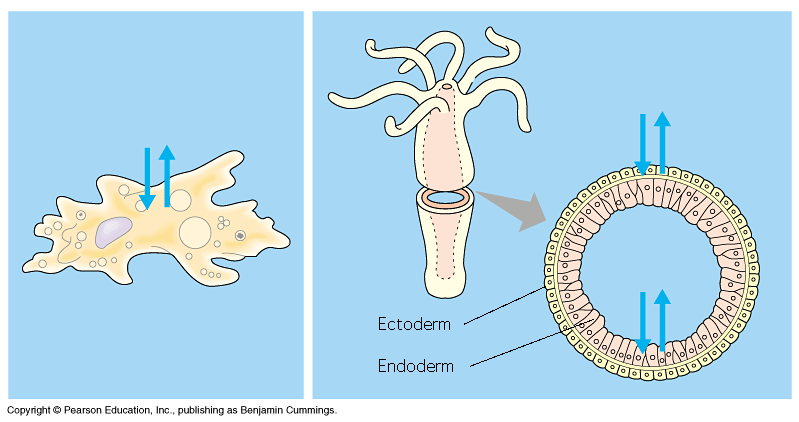
3.Diploblastic

4.Mesoglia present
5.Two types of body form

 Tube like polyps and
Tube like polyps and Umbrella shaped medusa
6.No segmentation
7.Cephalization absent
8.Nematocyst present in cell layer,
No cuticle
9.Only corals posses exoskeleton, limy or horny
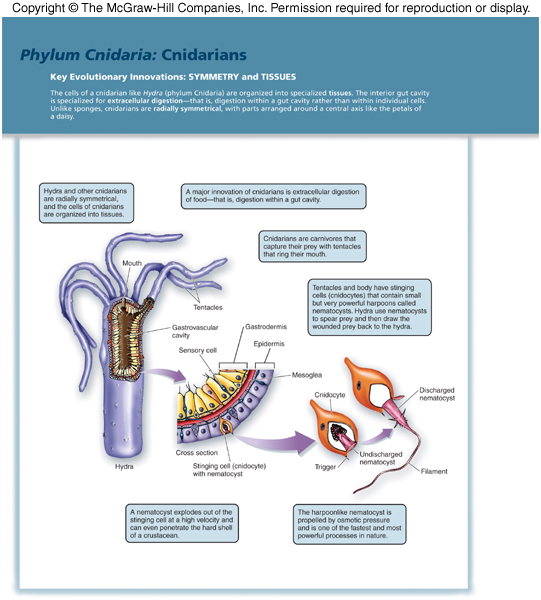
10.Incomplete alimentary canal, only mouth,
no anus
11.No circulatory system
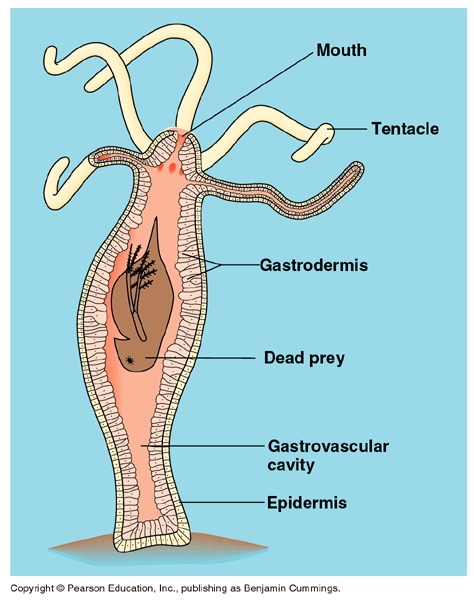
12.No respiratory system
13.No excretory system
14.Nerve net
15.Some with eyespots or statocyst as sensory organs
17.Asexual reproduction by budding or
regeneration
18.Unisexual/bisexual
19.External fertilization
20.Planula larvae can be seen in the life cycle

Free living forms inhabit warer or moist soil.Prasites live inside the host body

Bilateral symetry
Triptoblastic
No body cavity
Dorsoventrally flattened body
No segmentation
Shows a degree of cephalization
Epidermis soft and ciliated or covered by cuticle and with external suckers or hooks or both
Incomplete alimentary canal, only mouth, no anus
No circulatory system
No respiratory system
Flame cells and ducts with excretory system
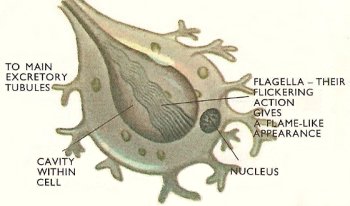
prence of a pair of anterior ganglia and longitudinal nerve cords (1-3)
Free living forms have eye spots /eyes
Some have chemoreceptors in head as sensory receptors

Reproductive system with ducts and aditional organs
Asexual reproduction in some forms by fragmentation
Usually bisexual
Internal fertilization

Many larval stages in parasitic forms .No larval stages in free living forms
in the life cycle
Nematoda
Found everywhere in soil, water and as parasites
Bilateral symetry
Triploblastic
Pseudocoelomate
Slender, Cylindrical tapered end body.No segmentation
Shows a degree of cephalization
Extra cellular tough cuticle is present
Hydrostatic skeleton of pseudocoelomic fluid
Lack cilia at any stage
Complete alimentary canal. Only mouth , no anus.
No circulatory system
No respiratory organs
Prence of simple excretory system with ducts
Prence of paired anterior ganglia and a pair of lateral longitudinal nerve cords
mainly papillae as sensory organs
A few have paired reproductive system
No asexual reproduction or regeneration
Unisexual
Internal fertilization
Larval parasites, larval stages in free living forms in the life cycle
Annelida
Found in world wide- marine, fresh water or on/in soil
Bi lateral symmetry
Triloblastic
Well developed coelom
Cylindrical worm like body, internal and external segmentation
Advanced cephalization
Definite cuticle and chetae of chitin, arranged segmentally
Hydrostatic skeleton of coelomic fluid

Complete alimentary having mouth and anus
Closed circulatory system with lateral hearts
Some have external gills
Excretory structures are nephridia
One pair of cerebral ganglia and double, solid ventral nerve cord
Simple forms of eye
Asexual reproduction in some by budding or regeneration
Reproductive system with sexual organs and ducts
Unisexual or bisexual
External fertilization
Trochophore larvae can be seen in the life cycle
Mollusca
Mostly marine or fresh water, some are terrestrial
Bilateral symmetry
Triploblastic
Haemocoel
A little trace of segmentation
Show a clear cephalization ,body is divided into head, muscular foot, visceral mass
Body covering is soft and it forms a mantle
Many have exo skeleton.In some have endoskeleton
Complete alimentary canal having mouth and anus
Radulla in mouthOpen circulatory system with dorsal heart
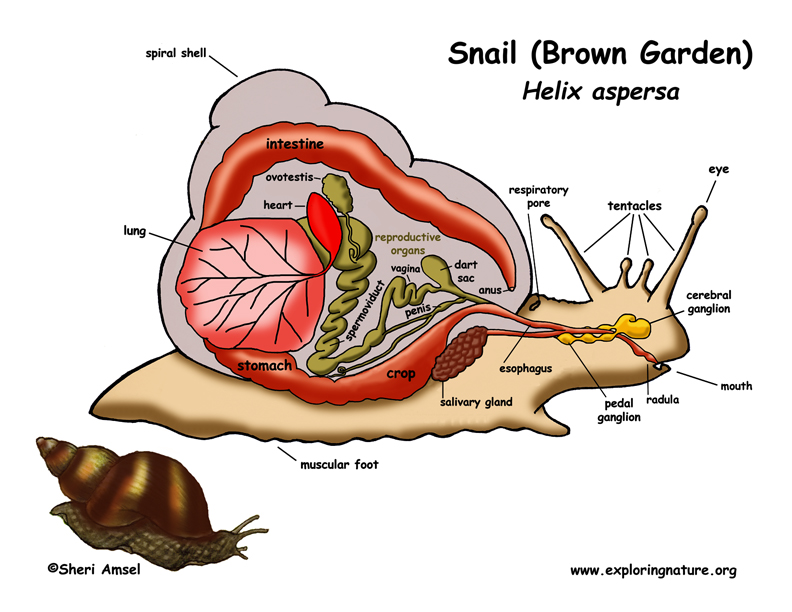
Gills or ctenidia in the mantle cavity for respiration
Excretory structures are nephridia
Nerve ring with ganglia and two pairs of nerve cords
Sensory organs are eyes , tentacles, some have eye spots or statocysts
Reproductive organs with ducts
Usually unisexual
External or internal fertilization
Trochophore or veliger larvae can be seen in the life cycle
Arthropoda
Lives in terretrial or aquatic environments
Bilateral symmetry
Triploblastic
Coelom greatly reduced and presence of haemocoel
Externally jointed, segmented body.Each segment typically bears a pair of jointed appendages.
Distinct cephalization can be seen.Parts of body are head, thorax and abdomen.
Exoskeleton of chitin secreted by epidermis
Exoskeleton
Lacks cilia in any stage
Complete alimentory canal having mouth and anus
Mouth parts in mouth
Open circulatory system with dorsal heart
Gills or book lungs or trachea as respiratory structures
Green glands or malphigian tubules can be seen as excretory structures
Paired dorsal central ganglia and double solid ventral nerve cord
Sensory organs are antennae,statocyst, sensory hairs, simple/ compound eyes
Reproductive system with reproductive organs and ducts
Asexual reproduction take place by parthenogenesis in some insects and crustaceans
Uni sexual
Mostly internal fertilization can be seen
One or more larval stages can be seen in the life cycle
Echinodermata
Exclusively marine
Adults are penta radial symmetry and larvae are bilateral symetry
Large coelom .It is developed as a water vascular system with associated tube feet
Cylindrical, star or flower form.No segmentation
No cephalization .Body is arranged in oral and aboral axis
Body covered by delicate epidermis often with spines
Prence of endoskeleton
Complete alimentary tract in some , some lack anus
Reduced circulatory system
Respiration by skin gills or papillae or tube feet or cloacal respiratory tree.
No excretory system
Radial nervous system present
Most donot have sensory organs.Some have tube feet for touch or sensivity. Some have eye spots or sensory tentacles as sensory organs
Have large reproductive organs.
Uni sexual
External fertilization can be seen
Bipinnaria or dipleurula larvae can be seen in the life cycle.
Vertebrates
Chordata
- A rod like dorsal notochord present some developmental stge at least during part of the life cycle.
- A single, dorsal hollow nverve cord present some developmental stage at least during part of the life cycle
- Pharyn gill slits are present at some developmental stage
- Poat anal tail is present at least during the embryonic developmental stage
- Closed circulatory system with a ventral heart.
- Coelom well developed.
- Sleleton if present, as an endoskeleton formed by mesoderm.
- Sexes usually seperate , oviporous or viviporous
External features of organisms to identify their classes
Classes of phylum Coelenterata
Hydrozoa
Medusa is small and free swimming
Radial symmetry
A circle of tentacles around mouth
eg:Hydra
Obelia
Soft coral
http://www.google.lk/url?sa=i&rct=j&q=&esrc=s&source=images&cd=&cad=rja&docid=LbBU2OOCiF4TtM&tbnid=wJ5tOvxTZJY0YM:&ved=0CAQQjB0&url=http%3A%2F%2Fwww.noaanews.noaa.gov%2Fstories2006%2Fs2652.htm&ei=qH41UuGeJIn7rAfU54CoDg&bvm=bv.52164340,d.bmk&psig=AFQjCNF1wPlZQFKvvi1kg9GrYN4EMsMDtg&ust=1379323130207017
Scyphozoa
Dominant stage medusa which is free swimming ,
polyp stage is minute or lacking.
Radadial symmetry
Four oral arms around mouth and tentacles like gastric filaments on the edge
eg: Aurelia
Anthozoa
Poplp stage only, which is solitary or colonial and no medusa.Biradial symetry
Many tentacles around mouth in many rings
eg: Sea anemone

True coral
http://www.okc.cc.ok.us/biologylabs/Documents/Porifera_Cnidaria/Cnidaria.htm
Classes of phylum platihelminthes
Turbellaria
Free living
Leaf like body with head
Ventral mouth with reversible pharynx, no suckers
Ciliated epithelium with mucous glands
eg:Planaria,
Dipalium

Trematoda
Endoparasite
Leaf like body without head
Ventral suckers on ventral side and anterior sucker surrounds mouth
Cuticle with spines
eg: Fasciola - liver flukes
Cestoda
Endoparasite
Slender, elongated, flat body divided into scolex and proglotids
Suckers and hooks on scolex
No mouth
Cuticle with microvilli
eg:Taenia - tape worm
Classes of phylum annelida
http://bio.rutgers.edu/~gb102/lab_2/301am-platyhel.html
Polychaeta
Distinct head with eyes and tentacles
Presence of parapodia
Numerous setae
No clitellum
eg:Nereis
Oligochaeta
No distinct head
No parapodia
Fewer numbr of setae
Clitellium present
eg: earth worm
Hirudinea
No distinct head having anterior and posteriot suckersNo parapodia
No setae
No clitelum
eg:Leech
Classes of phylum Mollusca
Polyplachophora
Dorsal shell formed by 8 overlapping plates
Radula present
Large flat foot
Head is present without eyes or tentacles
Eye spots in some
eg:Chiton 

Bivalvia
Shell of two lateral valves
No radula
Hatcher shaped foot
No head
No eyes
No tentacles


eg:Mussels
Gastropoda
Univalved shell usually coiled.Sometimes shells are reduced.
Radula present.
Largely developed foot
Gead is present with tentacles and eyes .
Eyes onone pair of tentacles.



Cephalopoda
External or internal shell present or none
Radula present
foot is modofied into arms and siphon
Head is present conpicuous
Eyes and 8-10 arms or many tentecles and siphon are present.
eg: squid
octopus Classes of phylum Arthropoda


Crustacea
Body is divided into cephalothorax and abdomen
One pair of appendages
Two pairs of antenna
eg:  prawn
prawn
 prawn
prawn
crab 

Insecta
Head thorax and abdomen distinct
Three pairs of legs on thorax and two pairs of wings
One pair of antenna
eg:cockroach , any insect
Chilopoda
Head followed by numerous segments of body
One pair of legs per somite
One pair of antenna
eg: Centiped
Diplopoda
Head , short thorax and abdomen
Two pairs of legs per somite
One pair of antenna
eg: Millipeds
Arachnida
Prosoma -cephalothorax and abdomen - ophisthosoma
Four pairs of legs on cephalothorax
No antennae
Classes of phylum Echinodermata
Asteroidea
Consists of acentral disc and five tapering arms or ends
On the upper surface there are many blunt calcareous spines and pedicellaria
Mouth is locate in the lower surface- oral surface and arms are in the upper surface - aboral surface
eg:Star fish

Ophiuroidea
Small rounded disc wth five distinct arms which are long and fragile
Long arms are jointed .
No pedicellaria.
Spines in lateral side of arm
Mouth is centered Mouth is centered.orally and no anus
Tube feet in two rows and no suckers
eg: Britle star

Echinoidea
No anus. Rounded or flat body
Skeleton eith movable spines and pedicellaria present
Mouth or anus either central or lateral
Slender tube feet with suckers
eg: sea urchin, sand dollar

Holpthuroidea
Elongated slender body
No spines or pedicellaria
Mouth anterior
Anus posterior
Tube feet usually present
eg: sea cucumber

Crinoidea
Bodi is a small cup shaped calyx of limy plates to which are attached five flexible arms.Some have stalks
Bearing many slender lateral pinnules
No spines
Mouth and anus on oral surface
Tentacles like tube feet
eg: Sea Lily
Classes of phylum chordata
Chondrichthyes



1.Spindle shaped body divided into head, trunk and tail
2.Skin with placoid scales
3.Paired pectoral and pelvic fins.Heterocercal caudal fin
4.Ventral mouth with emamelcapped teeth
5.Inner ear only,no middle or external ear
6.Cartilaginous skeleton
7.Eyes ususlly well develloped without lids
8.Two chambered heart
9.Respiration by gills,several gill slits ,no opperculum
10.Excretion by metanephric kidney.
11.Major nitrogenous waste is urea
12.Body temperature ectothermal
13.Brain with ten pairs of cranial nerves
14.No larval stage,eggs produced, ovoparou or oviviviporous
15.Internal fertilization
eg:shark,skate
Osteichthyes
1.Spindle shaped body divided into head , trunk and tail
2.Skin eith cycloid or ctenoid scales
3.Paired pectoral pelvic fin
4.Homocercal caudal fin
5.Usually terminal mouth with teeth which are bony
6.Inner ear only. no middle or external ear
7.Bony skeleton
8.Eyes normally well developed without lids
9.Two chambered heart
10.Four paired gill openings covered with opperculum
11.Major nitrogenous waste is ammonia
12.Body temperature ectothermal
13.Brain with ten pairs of cranial nerves
14.Larval stage may be present.Eggs produced usually oviporous
eg:
Tuna
1.Body comprises head ,trunk and tail.
2.Soft skin with gland.
3.Paired pentadactyl limbs.
4.Some adults have tail.All larval forms have tails.
5.Ventral mouth.If teeth are present they are fasterned to the surface of bones.
6.Inner and middle ear only. No external ear.
7.Largely bony skeleton.
8.Eyes oftenly with movable lids and nictitating membrane.
9.Three chambered heart.
10.Respiration by gills, lungs and skin or mouth lining.
11.Excretion by metanephric kidney.Major nitrogenous waste is urea.
12.Body temperature ectothermal.
13.Brain with ten pairs of cranial nerves.
14.Larval stage usually present.Eggs produced.( oviparous).
15.External or Internal fertilization.
eg: Toad, Frog,Salamander, Ichthyopus
Reptelia
1.Body is composed of head , neck trunk and tail
2.Skin dry with horny scales and horny plates.
3.Paired pentadactyl limbs.
4.Post anal tail covered with scales.
5.Long mouth margined with teeth in sockets in some reptiles.
6.No external ear. Inner and middle ear only.
7.Well ossified skeleton.
8.Large lateral eyes with eye lids and with nictitating membrane.
9.Four chambered heart.
10.Respiration by lungs.
11.Excretion by metanephric kidney.
12.Excretion by metanephric kidney.Major nitrogenous waste is urea or uric acid.
13.Body temperature ectothermal.
14.Brain with 12 pairs of cranial nerves.
15. No larval tage . Oviparous or ovoviviparous. Yolky eggs in shells.
16.Internal fertilization.
eg: lizard
cobra
crocodile
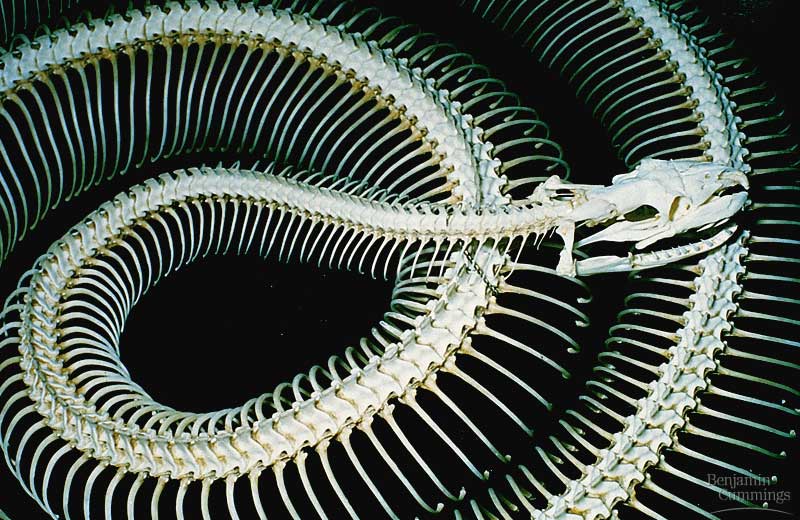
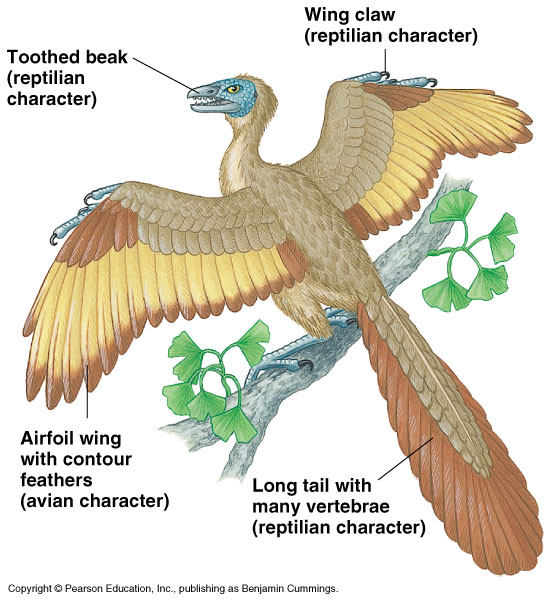
Aves
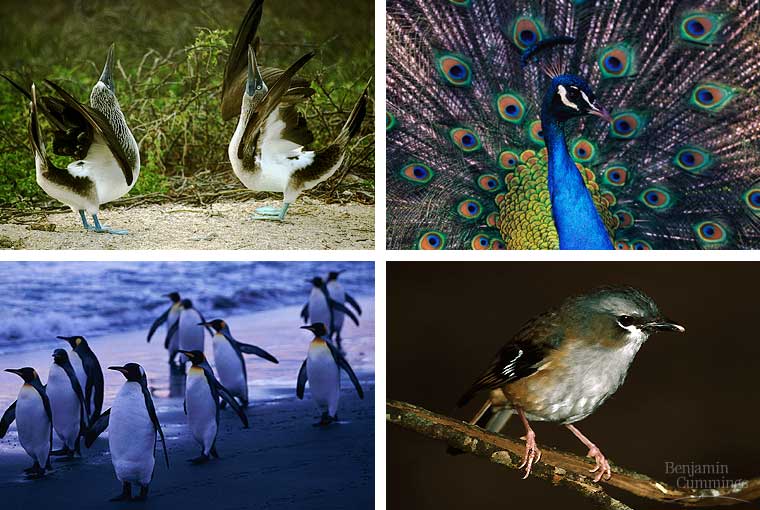


1. Stream lined body divided into head, neck trunk and tail.
2.Skin bears feathers .Legs have scales
3.Paired pentadactyl limbs.
4.Ventral mouth with teeth in sockets.
5.Absence of external ear,Presence of middle and internal ear.
.
6.Endo skeleton light,strong,fully ossified with air cavities.
7.Large and lateral eyes with eye lids and nictitating membrane.
8.Four chambered heart.
9.Respiration by lungs.
10.Excretion by metanephric kidnry,major nitrogenous waste is urea or uric acid.
11.Body temperature endothermal.
12.Brain with12 pairs of cranial nerves.
13.No larval stage.Yolky eggs in calcareous shells oviparous.
eg:parrot, crow


Mammalia
1.Body with head,neck, trunk and tail. Differ in forms.
2.Skin bears hairs and glands.
3.Paired pentadactyl limbs.
4.Tails are of diverse forms.
5.Ventral mouth with teeth in sockets.
6.Presence of external, middle and inner ear.Presence of pinna.
7.Skeleton largely of bone with cartilage over surfaces of joints.
8.Eyes with movable lids.Some have nictitating membrane.
9.Four chambered heart.
10.Respiration by lungs
11.Excretion by metanephric kidney.Major nitrogenous waste is urea or uric acid.
12.Body temperature endothermal.
13.Brain with 12 pairs of cranial nerves.
14.No larnal stage.Eggs develop within mother.(viviparous or oviparous.
15.Internal fertilization.
eg:Rat.Man
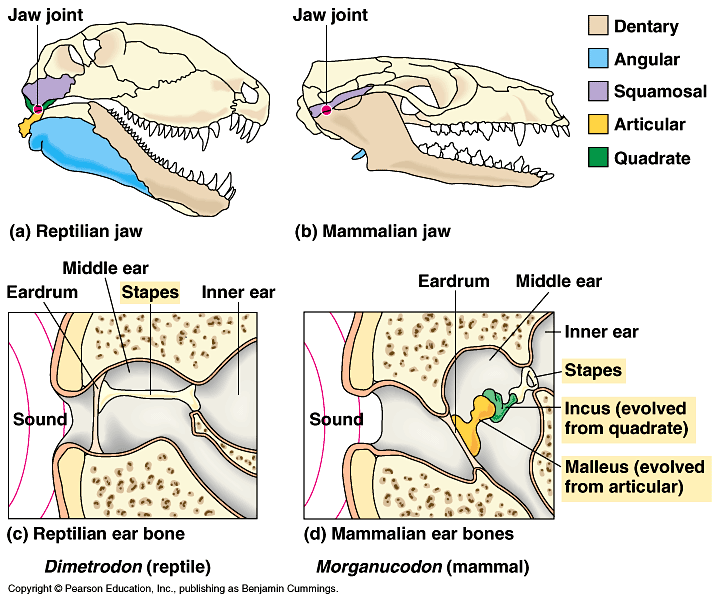
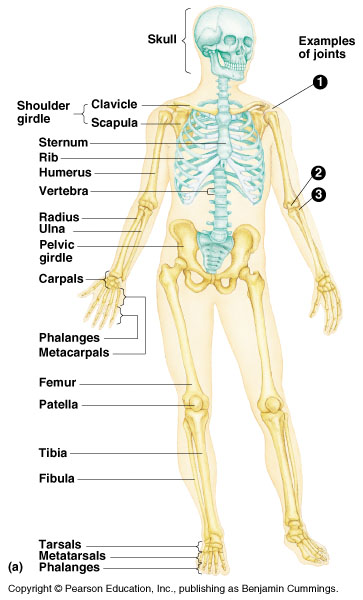
Photo by Dr. Lloyd Glenn Ingles © 2001 California Academy of Science
quagga 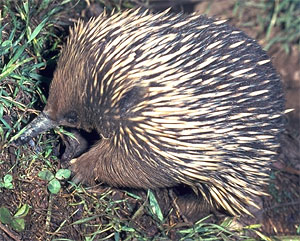

long-beaked echidnas (short-beaked echidna)
Echidna
. Photo by Dr. Lloyd Glenn Ingles © 2001 California Academy of Scienc 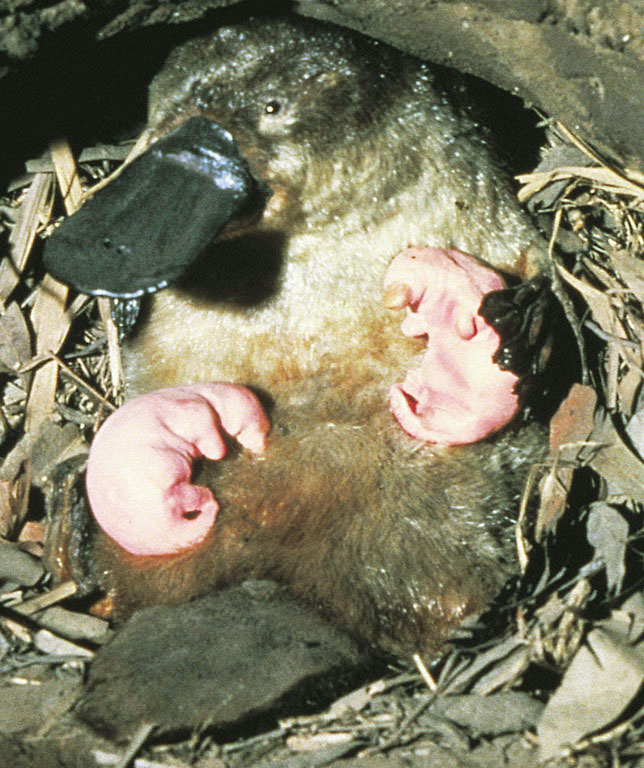

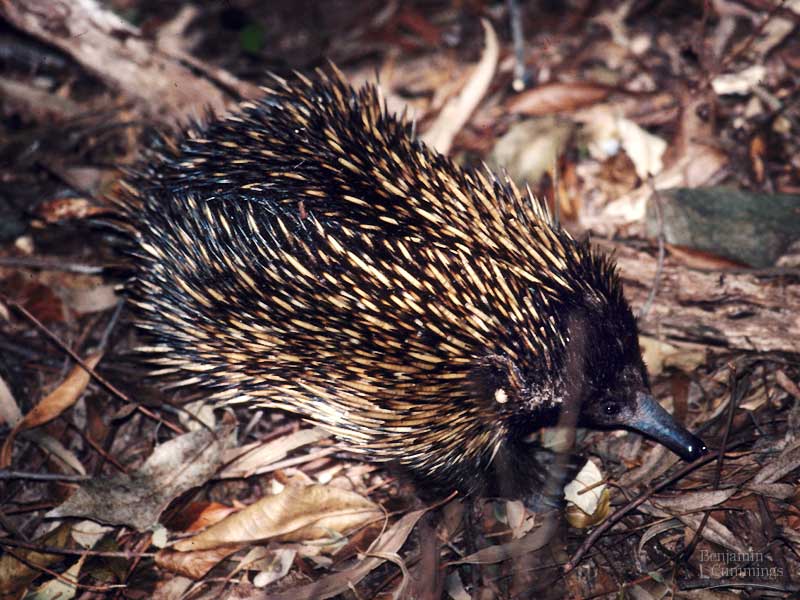 spiny anteater
spiny anteater 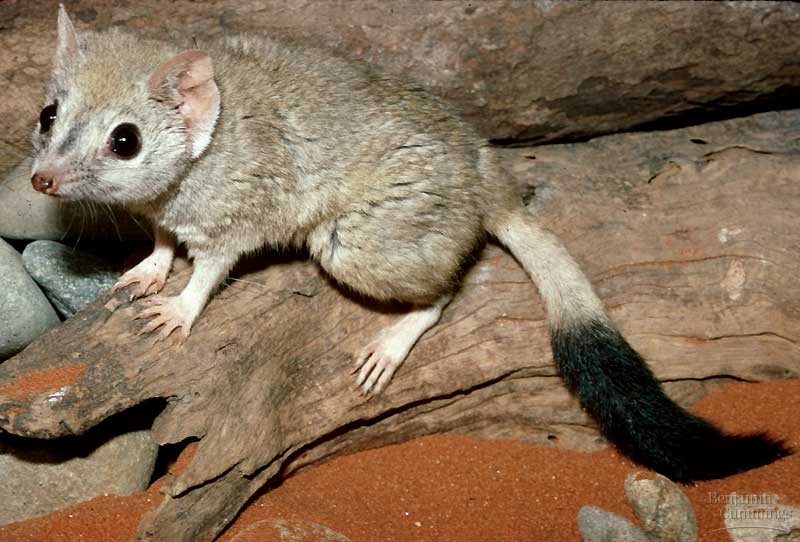
pouched-mammals

Red Kangaroo. Photo by Gerald and Buff Corsi, © 2002 California Academy of Sciences.
<

Koala.
Photo by Gerald and Buff Corsi, © 2002 California Academy of Sciences.
<
Thylacinus, an extinct marsupial wolf.

The bat
Eptesicus fuscus. Dr. Lloyd Glenn Ingles, © 1999 California Academy of Sciences
Black Rat.
Photo © 2004 Larry Jon Friesen. <


















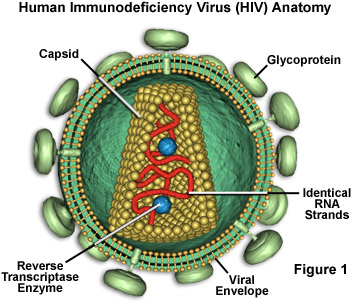



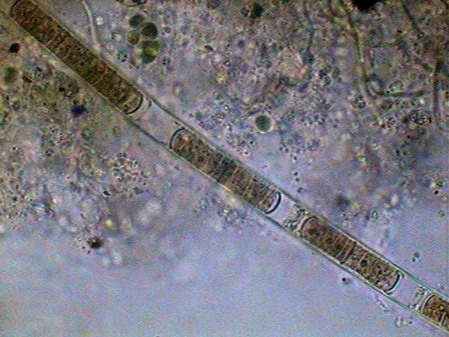













.jpg)


